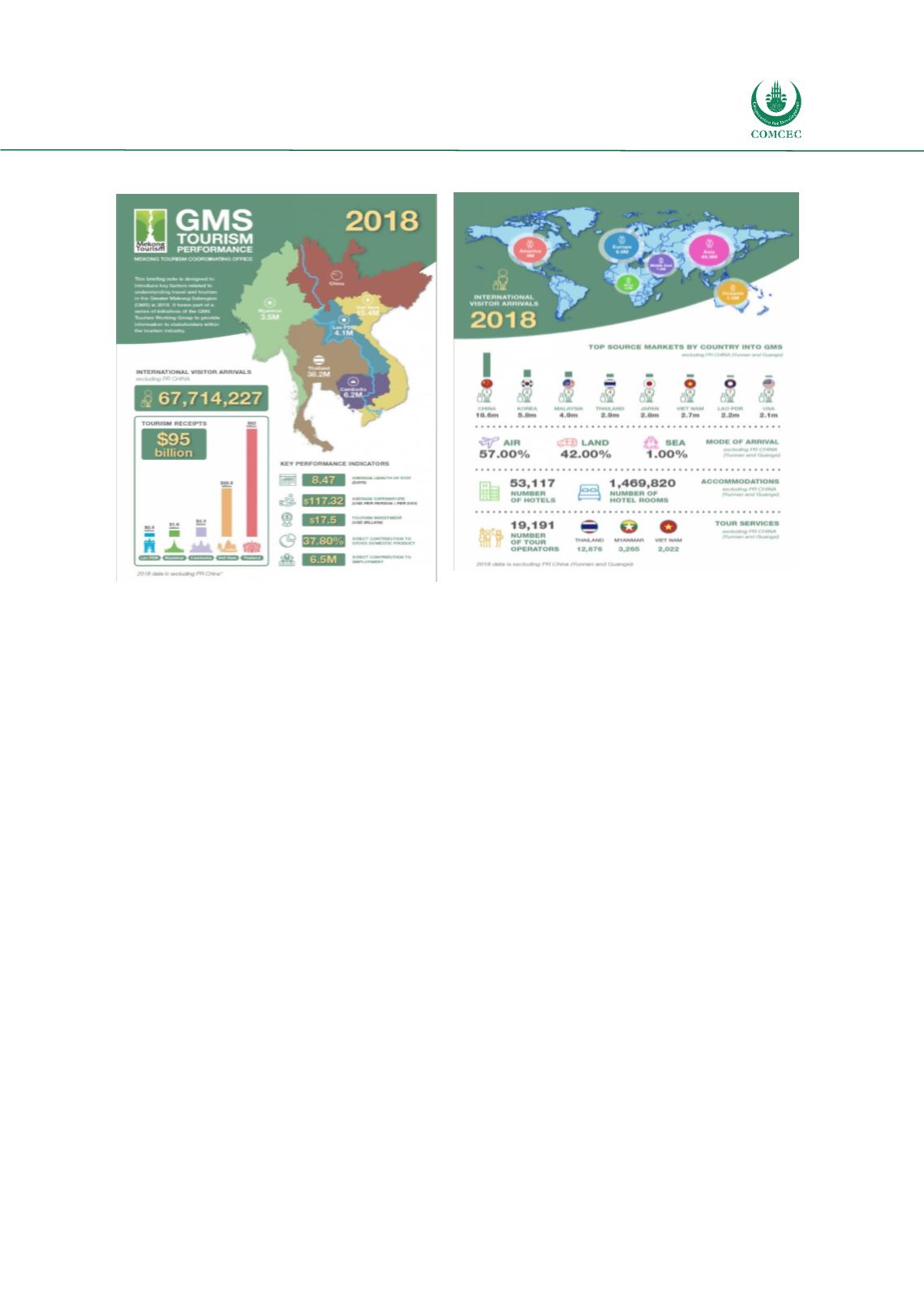

Sustainable Destination Management
Strategies in the OIC Member Countries
97
Figure 35: Top Sources by Country into GMS Tourism Performance Indicators
Source: Mekong Tourism Website (2019)
The collection of reliable and consistent data are a challenge for the MTCO due to different
reporting systems and timeframes for each country. Steps have been taken to improve this by
having a data harmonization working group. At the current point in time, the past annual
scorecards were based on different reporting systems and cannot be compared with each
other.
G.
Future Development of the Corridor
During the last decade, dramatic changes were witnessed in the GMS. Myanmar, for example,
saw a boom in international tourist arrivals. Air and overland access are now able to connect
some of the most remote locations. More streamlined visa issuance has made exciting multi-
country journeys possible for more people. More luxury hotels throughout the GMS and luxury
vessels on the Mekong River and other waterways are attracting affluent consumers who are
looking for high-end experiences.
The GMS is very close to being the largest and fastest-growing source markets of the 21
st
century, China and India. The rising wealth and the growth of a middle class with disposable
income in the rest of Asia, especially Southeast Asia, provides tremendous opportunities for
future growth. This is all in addition to the existing long-haul markets of Europe and North
America. While regional travel is more sustainable, in that it is less susceptible to external
shocks, it does require different products, services, and experiences.
Information and communications technology (ICT), including the Internet, social media, and
mobile devices, has transformed how consumers are researching and purchasing products,
including travel & tourism. Travelers now have access to information in real-time and can also
share their experiences “in the moment.” Low-cost local SIM cards and Wi-Fi access are readily
available, and peer-to-peer platforms allow travelers and local micro-entrepreneurs to connect
















